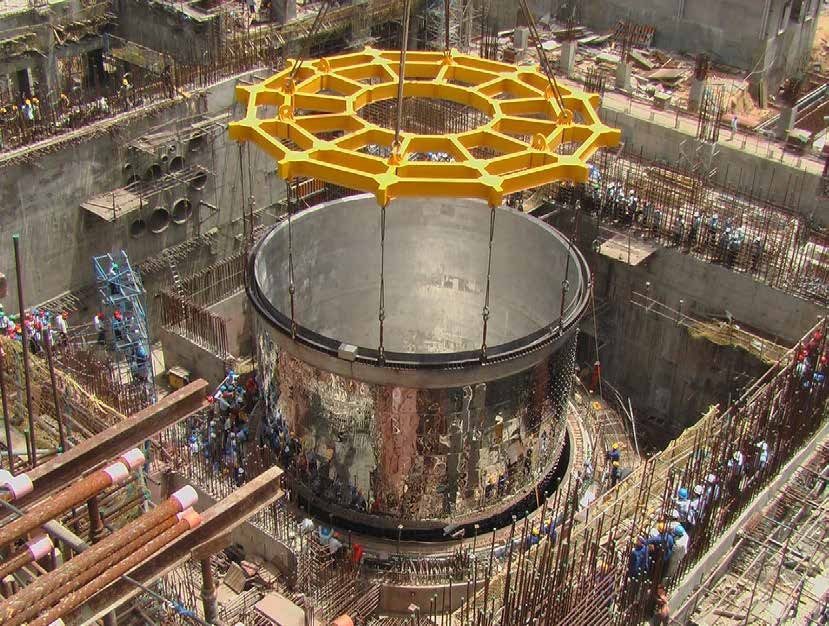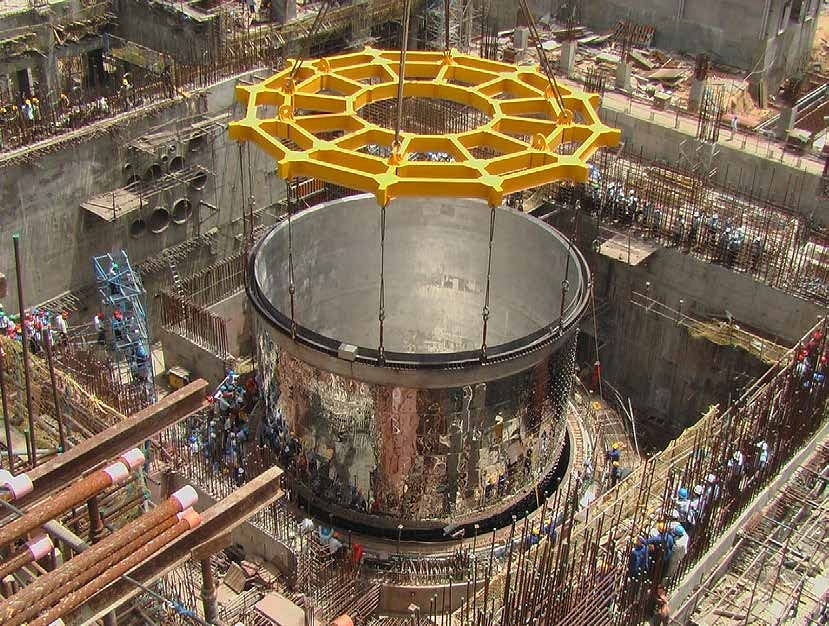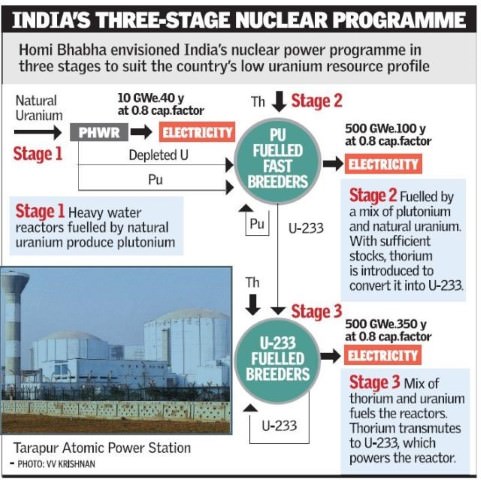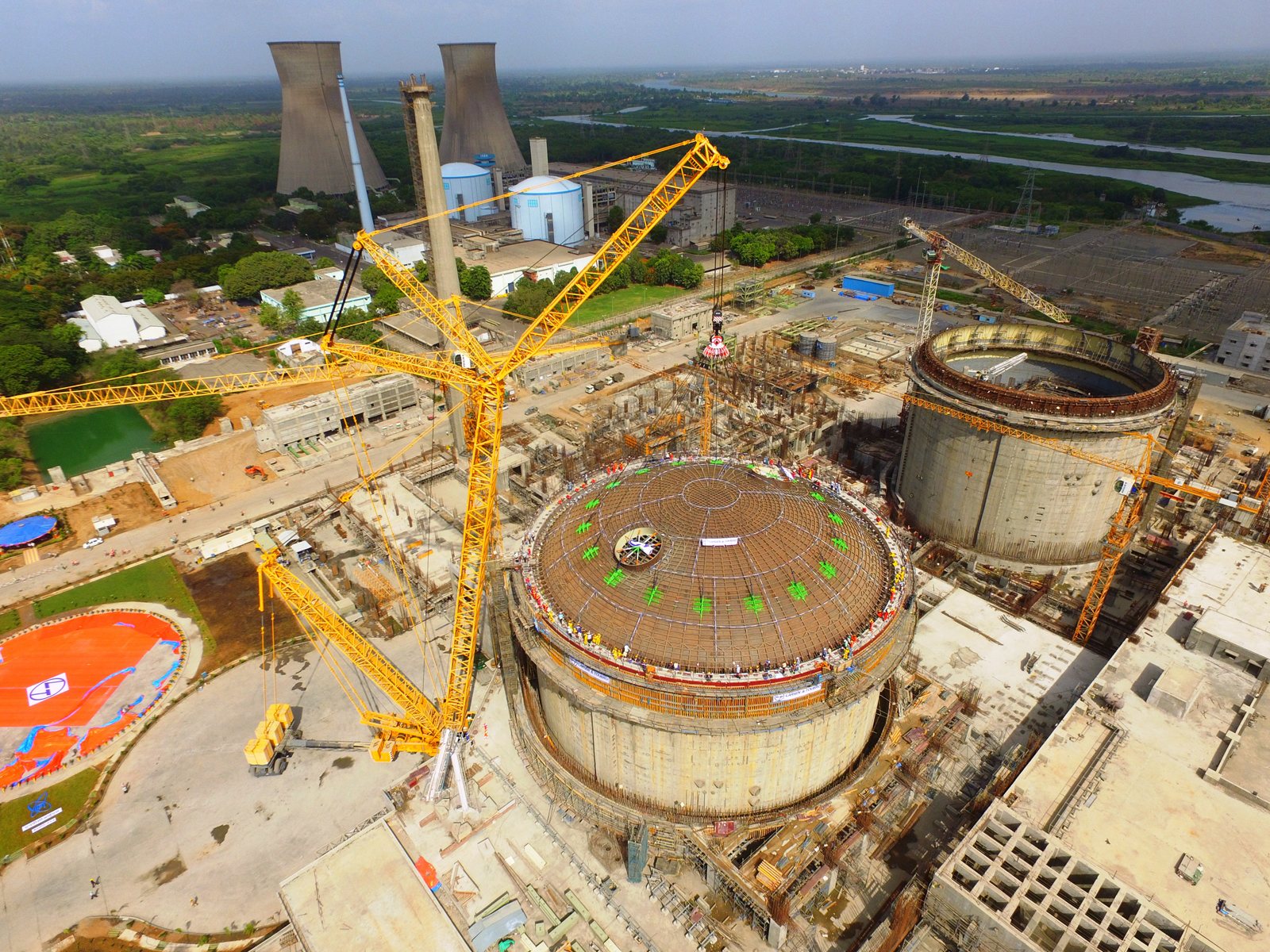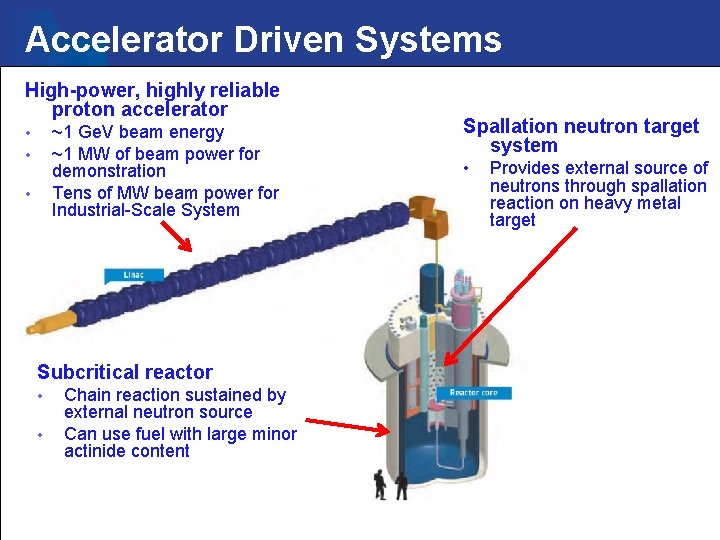--While the topic has been briefly covered before, this two-part article, written by
@Gautam offers a more in-depth look at the program, accompanied by great diagrams & pictures, and slightly edited by me--
India' 3 stage nuclear power program has been the object of my fascination for long. A program born in the early 1950s that would reach its final stage of fruition about 100 years later. Within those 100 years the country needs to invest 10s of billions in R&D to develop some incredibly complex & niche technologies most of which aren't commercially available & invest 100s of billions to actually build the nuclear plants.
Oh and the research institutions working on this have been under international sanctions for many many years. Due to India's non-membership of the Nuclear Non-Proliferation Treaty (NPT) & the Nuclear Suppliers Group (NSG), they are cut off from the rest of the world & have to continue working in isolation for most of those 100 years. Add these problems with India's non-existent engineering, manufacturing & technological base in the 50s & this program is easily one of the most difficult ones we've ever undertaken.
The reason for taking up this program is well known. India's reserves of Uranium & Plutonium are limited. Much of our U & Pu reserve is/will be used for military purposes, from nuclear warheads to marine nuclear reactors. Our thorium reserves are huge, ~25% of global reserves of Th are in India. The Indian nuclear establishment estimates that the country could produce 500+ GWe for at least four centuries using just the country's economically extractable thorium reserves. For comparison, India' current installed electricity generation capacity (including all sources) is 388 GWe. It would be a shame to have so much Thorium & do nothing with it.
I am sure you already know this by now. But still lets go over the basics one more time. The 3 stages of the program are as follows:
Stage I : Natural Uranium undergoes fission in a
Pressurized Heavy Water Reactor (PHWR) to give us electricity. Plutonium & depleted Uranium are the by products. The depleted Uranium will be converted into Plutonium-239 via nuclear transmutation during reprocessing. Some other byproducts produced in small quantities & vitrified & sent to storage.
Stage II : Pu-239 from Stage 1 is reprocessed & mixed with natural Thorium to produce a Mixed Oxide Fuel (MOX). MOX undergoes fission in a
Fast Breeder Reactor (FBR) to produce electricity. Plutonium & Uranium-233 are the by-products. The U-233 will be used in the 3rd stage where as the Plutonium will be reprocessed & used in the 2nd stage again. The FBRs will also produce small quantities of Curium (Cm), Americium (Am) & Neptunium (Np). All 3 of those will be converted to Pu & fed into the 3rd stage again.
Stage III : The final stage will use a MOX prepared from U-233 obtained from Stage-2 & natural Thorium. The fission will take place in an
Advanced Heavy Water Reactor (AHWR) producing electricity & U-233 as byproduct. The byproduct can be used to make more MOX to feed the AHWRs.
Two types of reactor technologies were available to us for the Stage 1;
Light Water Reactors (LWR) &
Pressurized Heavy Water Reactors (PHWR). LWRs use enriched Uranium or MOX as fuel & are cooled by light water where as PHWR use natural Uranium & are cooled by heavy water. The difference between Light & Heavy waters is the isotope of hydrogen in the water, the former has protium & the later has deuterium.
Adopting any of the 2 reactor types brought its own technological challenges as India then could neither enrich Uranium nor produce heavy water.
This was a very critical choice, thankfully we made the right choice. PHWRs were chosen as the way ahead. BARC (Bhabha Atomic Research Centre) correctly estimated that developing & deploying large scale Uranium enrichment facilities would take more time & money than developing & deploying large scale heavy water production facilities.
Indigenously developed IPHWR-700 (700MWe) reactors being installed at the Kakrapar Atomic Power Station (KAPS)
Also there was the military angle. Heavy water in PHWRs occasionally get bombarded by neutrons. This causes some of the deuterium in heavy water to convert to tritium. Tritium is radioactive & needs to be removed from the heavy water reservoirs.
BARC developed a method by the name Liquid Phase Catalytic Exchange (LPCE) for the removal of Tritium.
After the removal Tritium is stockpiled & later used in making thermonuclear weapons. Not a lot is known about the LPCE process, for obvious reasons it is shrouded in secrecy. Of course that's not the only way of producing Tritium nor is it the most efficient way. It is however the cheapest way. Some decades back we started producing Tritium by irradiating Lithium-6 directly in the IPHWR family of reactors.
Somewhere along the way we developed our own enrichment technology & deployed in en-masse. Enrichment tech was developed for preparing fuel for the fission & boosted-fission bombs. Interesting how military and civilian needs feed each other. The deployment of enrichment facilities brought the previously discarded LWRs back into the picture. With the signing of the India-US civil nuclear deal in 2005, the foreign LWR reactor tech & more importantly nuclear fuel became available.
We signed deals with Russia & then France for LWR & life time supply of nuclear fuel for these reactors. There was a deal in the making with the Americans too, though it might be dead by now, however the most critical benefit that India received from this deal, directly or indirectly, was that it was now treated as a de-facto member of NSG able to carry out nuclear commerce thanks to a special waiver, the only such known waiver granted to a nuclear weapons state, even though de-jure it was not. We've also signed deals to import nuclear fuel from Kazakhstan, Uzbekistan, Australia etc. Now the 1st & 2nd stage of the program looks like this:
The idea is to use foreign LWR to generate electricity, thus freeing up local Uranium & Plutonium for you know what. The PHWRs though are going to be our own design & fueled by our own Uranium. Have to keep those PHWRs away from IAEA safeguards if we want to keep producing & stockpiling Tritium. We are also in the process of converting the Arihant class SSBN's CLWR-B1 reactor into a full scale 900 MWe civilian LWR reactor named IPWR-900.
A shore-based test & training version of the CLWR-B1 Pressurized Water Reactor, crews were certified on this prior to deployment on the Arihant-class SSBNs.
The IPHWR family of reactors started off as direct derivatives of the Canadian CANDU reactors. Eventually larger, more reactors with better safety parameters were developed. The original CANDU were barely Generation II safety standard compliant. Whereas the IPHWR-700, the current backbone of our nuclear reactor fleet, is Generation III+ compliant. Can the IPHWR family still be considered CANDU derivatives? I'll leave that to your judgement.
In 2016-2017 the following was the projection of the installed nuclear power generation capacity:
With the pandemic, budgetary problems & the stellar rise of thermal/hydro/solar/wind power installation in the country expect the timelines shown above to be pushed back by a few years at least.
Our current installed nuclear power generation capacity is 6.78 GWe. In the post above you can see we will reach 22.48 GWe by 2031.
The upper limit of installed capacity from the IPHWR family & various research reactors using domestic Uranium is ~10 GWe. 6 GWe will come from the 6 units of the Russian VVER-1000 reactors in Kudankulam & 9.9 GWe from the 6 units of French EPR at Jaitapur. Total power from imported reactors is 15.9 GWe.
Therefore total installed power capacity from Stage 1 from both domestic & imported reactors is ~25.9 GWe.
If by 2031 we will have 22.48 GWe, then we should be able to install the balance ~3 GWe & reach the maximum capacity limit of the Stage 1 by 2035. From then on there will be no further increase in Stage 1 reactors as shown in the graph above.
As we are implementing the Stage 1 we are also entering early implementation of Stage 2 of the program with the Prototype Fast Breeder Reactor (PFBR). The physical testing phase of the Stage 2 began in October 1985 when the 40 MWt
Fast Breeder Test Reactor (FBTR) attained criticality. The reactor ran into problems soon & had to be shut down in 1987 & then again in 1989. By the end of the 90s, IGCAR had a good understanding of the reactor & it would run at full capacity for the next 2 decades.
Based on the experience of the FBTR the
Prototype Fast Breeder Reactor (PFBR) program started in the 90s. PFBR is a 500 MWe reactor that would provide validation for the full sized
FBR-600. FBR-600 or Fast Breeder Reactor-600 is a 600 MWe scaled up version of the PFBR.
The FBR-600 will be the main reactor for the Stage 2 of the program. Construction was supposed to begin in 2007 in Kalpakkam, but some design changes caused inordinate delays.
Design concept of the PFBR:
--Some construction images--
Here you can see the reactor vessel being lifted by a crane:
Vessel being inserted into the designated spot.
The vessel was manufactured by L&T's Nuclear Engineering division:
Mounting equipment on top of the vessel:
The PFBR facility nearly complete:
In the winter session of the Parliament in 2020 responding to a question in the Lok Sabha Dr. Jitendra Singh said the PFBR will be operational by December of 2021.
We are now in December 2021. When asked the same question Dr. Jitendra Singh responded the commissioning date has been delayed to October 2022. Almost a year from now.
 The advantage of breeder reactors is that they produce more fuel than they consume.
The advantage of breeder reactors is that they produce more fuel than they consume. The PFBR/FBR-600 will produce Plutonium & Uranium, this surplus Plutonium bred in each FBR can be used to set up more such reactors. Thus the problem of lack of Uranium & Plutonium which stops the growth of nuclear power in India is greatly reduced but not completely gone. You can completely remove that problem once you can bring in the country's Thorium into play.
It is estimated that once India's nuclear power installed capacity reaches 50 GWe we will have enough Plutonium & Uranium to bring the 3rd stage online. 25 GWe is supposed to come from Stage 1, so we roughly need another 25 GWe from Stage 2 to start making Stage 3 reactors. We will need ~40 breeder reactors of 600 MWe capacity to get to 25 GWe. That's a lot of reactors. Maybe we should make a 1 GWe FBR...





